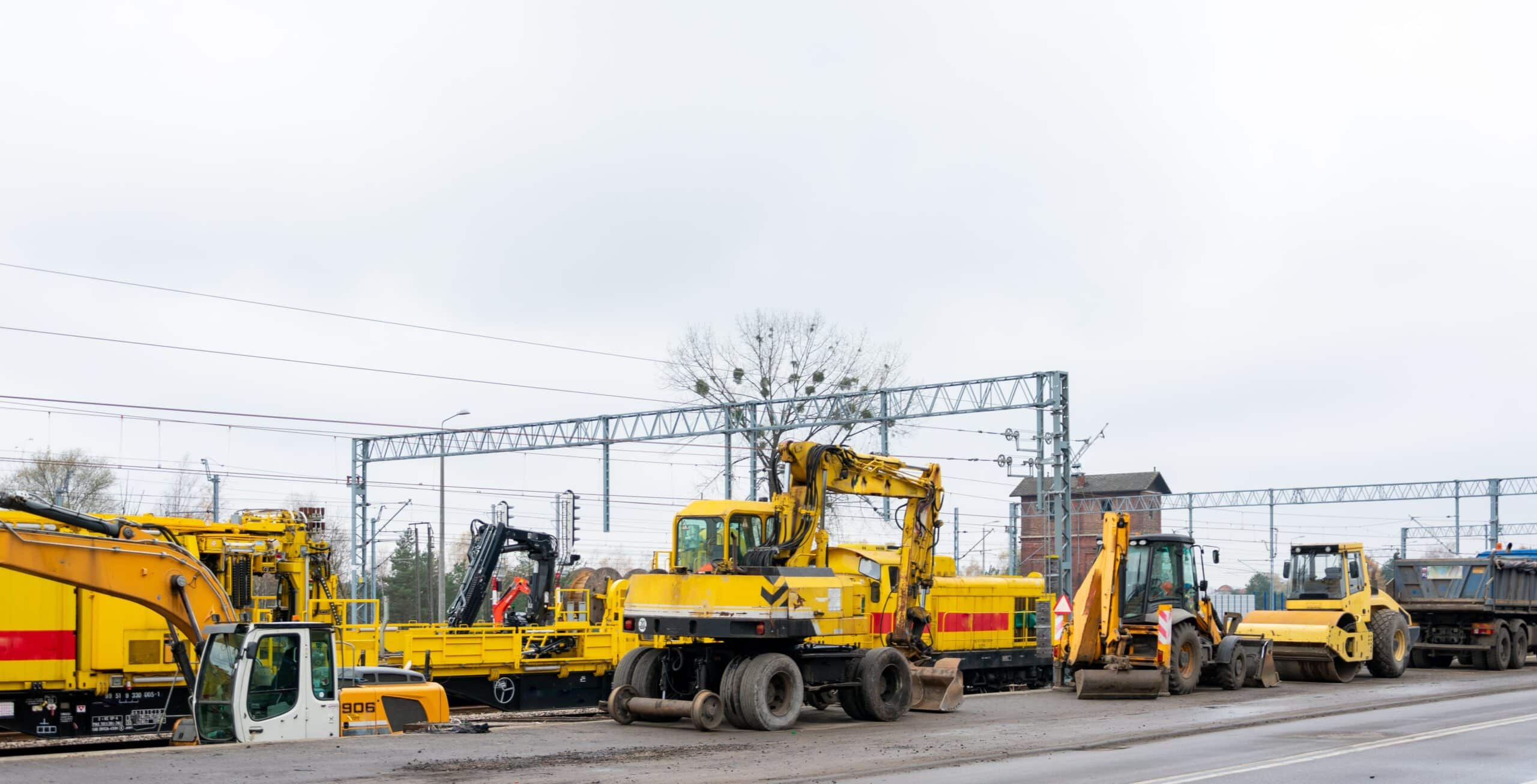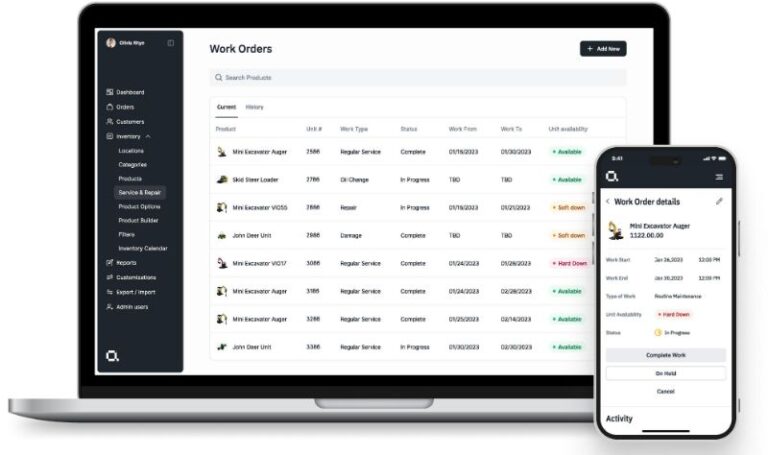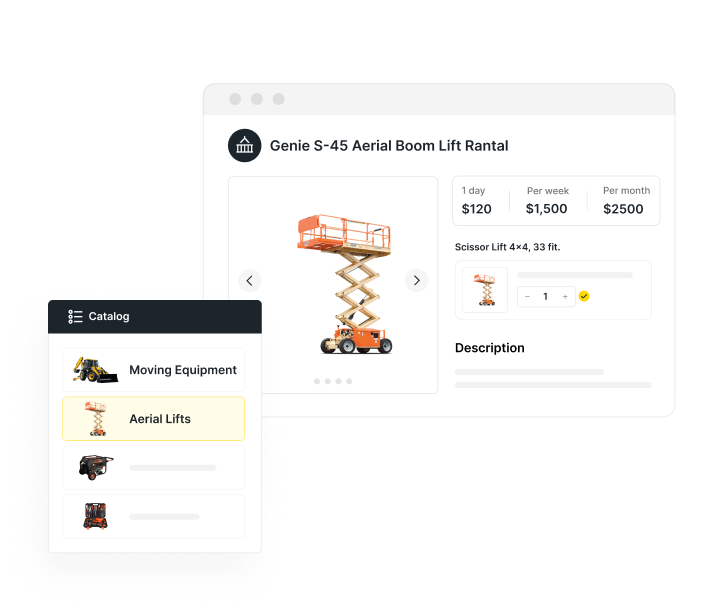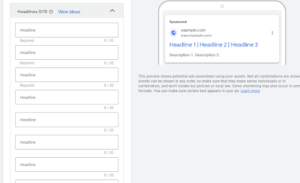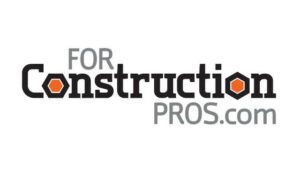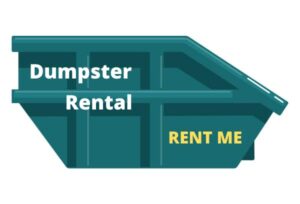Every now and again, a customer will end up damaging your equipment. While most renters will care for it and use it properly, customer-incurred damage is something that can and will happen.
In some cases, damage might occur in a way where the customer isn’t really at fault. But in other cases, the damage is clearly due to a mistake on the customer’s part, and they can reasonably be said to be at fault for it.
It’s important for rental companies to prepare for this contingency, and to have processes and policies in place to bill the customer fairly for the damage they caused, so that you won’t have to eat the entire repair or replacement cost.
Tips for planning ahead for cases of customer-incurred equipment damage
No matter what type of business you run, there’s always a risk of customer-incurred equipment damage. From conducting regular inspections to having the right insurance coverage, these tips will help you be ready for any unexpected situations that may arise.
Create and implement a clear, explicit damage waiver
The specifics of damage waivers can vary among different rental companies, but the core intent is the same. You’ll want a legally airtight document, which customers need to sign when they rent from you, that makes it clear and explicit what kinds of damages the customer is responsible for, and how you will go about invoicing and collecting for those damages if they occur.
This is something where it’s best to consult with a contract attorney. By signing it, the customer is agreeing to pay to cover damage to your equipment for which they are at fault (with what constitutes “at fault” delineated in the waiver). Having a well-drafted damage waiver in place not only protects your business but also sets clear expectations for customers, reducing the likelihood of disputes.
Consider implementing a security deposit
Up-front security deposits are another way to help protect your business financially from potential repair costs. A security deposit is generally returned to the customer at the end of the rental period, but withheld in the case of damage.
This approach serves as an incentive for customers to handle the rented equipment carefully and responsibly, as they are aware that they will forfeit their deposit if any damage occurs during the rental period. Security deposits can also help cover the cost of repairs or replacements, minimizing the financial impact on your business.
Timely communication is absolutely essential
The COVID-19 pandemic brought serious issues concerning the availability of replacement parts for heavy equipment. During that time, a lot of rental companies had machines that were hard down but unable to be repaired. Even now, there are still some lingering supply chain issues ongoing.
Planning ahead and keeping replacement parts available ahead of time can help you ensure timely repairs on hard down machines, to get them out on rent and generating revenue faster without having to wait on parts – multi-month wait times for a critical machinery part could mean a lot of lost revenue on that piece of equipment.
To avoid this situation, establish a relationship with reliable suppliers and manufacturers. Maintain an inventory of commonly needed replacement parts, such as filters, belts, hoses, and electrical components. This proactive approach will help minimize downtime and ensure that your equipment remains in top condition.
Implement a well-defined damage waiver policy for customers
If a piece of equipment is returned with significant damage – for which the customer is clearly at fault – it’s important to discuss it with them immediately. Machines should be undergoing inspection no later than 24 hours of being returned by a renter. However, the best inspection strategy is to inspect with the customer still onsite so that your staff can communicate in person any damage that was created. Offer to have a quote ready on the repair cost for them within 48 hours, 72 at most.
What you don’t want to do is wait days – or even a week or longer – to inform the customer about the damage. Prompt communication helps maintain transparency and trust between you and the customer, and it also prevents any misunderstandings or miscommunications that may arise from delayed notifications.
Document everything with pictures
Photographic evidence is a key way of establishing and proving that damage to a piece of equipment was incurred by a customer. Quipli’s software allows you to store and upload these images for future reference if needed. Be sure to take a series of clear, high-quality photos both directly before, and directly after, each rental period.
That way, if you need to invoice a customer for damage and they try to dispute it, you have solid proof of the damage in question. Customers also often back down from disputing an invoice for damages if you’re able to show them that you have that kind of proof – preventing legal headaches.
How to invoice a customer for damage to your equipment
A customer has returned a unit of equipment with severe damage, incurred by that customer’s own mistake or negligence. What happens now?
Take photos immediately of the damage, to compare against the “before” photos.
Before you create a work order and send the machinery in for repairs, make sure that the nature and extent of the damage is fully documented photographically. This step is crucial in establishing a clear and accurate record of the equipment’s condition, which will help you justify the repair costs and make it easier to resolve any potential disputes with the customer.
Confirm which customer was the last to rent the damaged equipment
With Quipli’s software, when you create a work order for damaged or hard down equipment, you can easily click through to view the last invoice number associated with its most recent rental period. This allows you to quickly identify the responsible party and begin the process of invoicing them for the damage.
Determine a fair amount to bill the customer to cover the repair cost.
The terms and conditions associated with this should be clearly and explicitly delineated in a damage waiver that all rental customers will sign when doing business with you. Ideally, you’ll want to charge such that the full cost of the repairs are covered, so you’re not paying out of pocket and losing money due to the customer’s mistakes.
There are a number of ways you can go about determining amounts – some companies, for example, will specify something like “3-5x the total rental cost” as the damage penalty. It’s important to be fair and transparent with customers about these charges, as this will help maintain goodwill and minimize disputes.
Communicate to the customer that they are at fault for damage, and that you will need to bill them for the cost of repairs.
Centralized, clear communication is important. It’s a good idea to make sure that the relevant communications are all in writing – e.g., via email that you can save and back up – in case of a legal dispute in which those materials might be needed.
Provide the customer with a signed copy of your binding contract specifying that they will be liable for damages, as well as copies of the photos you took of the damage. This kind of evidence can help prevent pushback from the customer, as it demonstrates the legitimacy of your claims.
The right software can help you streamline your invoicing process for customer equipment damage
You can do this using Quipli’s billing and invoicing software tools, which also integrate with Quickbooks Online. Make sure to itemize the repair costs and include any relevant documentation, such as photographs and the signed damage waiver, to support the charges. This will help the customer understand the rationale behind the invoice and reduce the likelihood of disputes or non-payment.
Properly handling equipment damage and effectively invoicing customers for repairs is a critical aspect of running a successful rental business. By implementing clear policies, maintaining open communication, and using tools like Quipli to document and manage the invoicing process, you can protect your business from financial loss and maintain positive relationships with your customers.
Conctact us today to learn about Quipli’s billing and invoicing features, as well as service/repair features to streamline your operations and ensure a smooth, professional experience for both you and your customers.
Contact Us Today to Learn About Quipli’s Service & Repair Features


